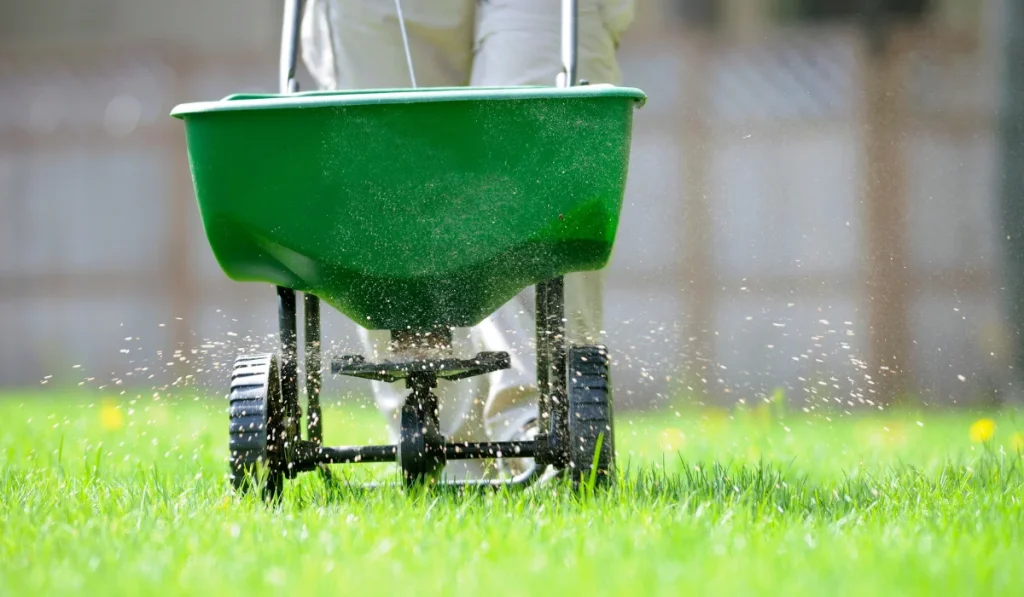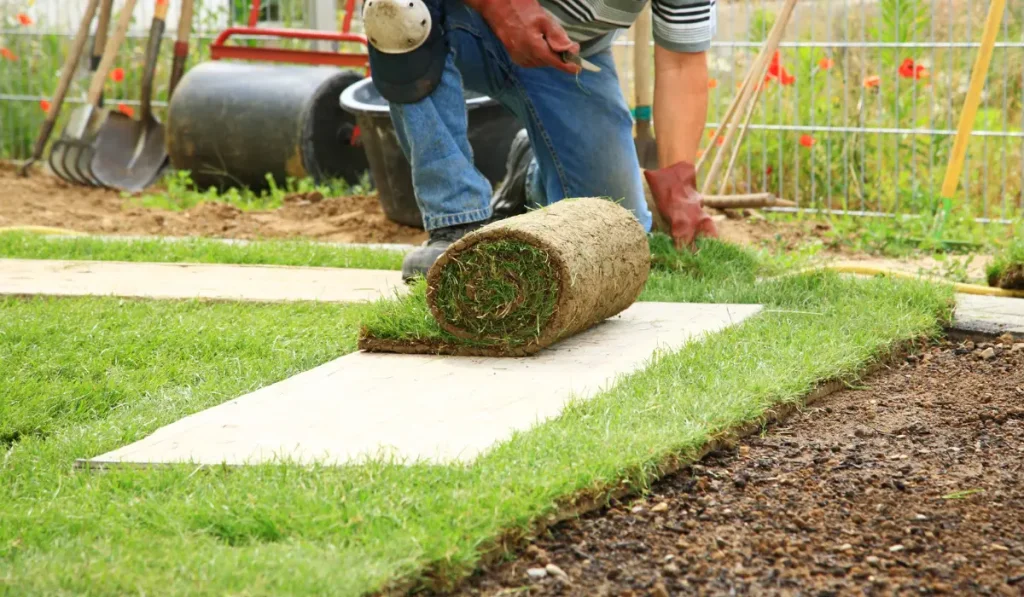Applying lime to your lawn can greatly affect its health and appearance. The best time to apply lime is during the fall or early spring. This allows the lime to break down and work into the soil, preparing it for the growing season.
Keep reading to explore the specifics of lime application and learn the best practices for a lush, green lawn.
Key Takeaways
- The best time to apply lime to your lawn is early spring and fall.
- Yellowish grass, weed proliferation, moss growth, and patchy lawn areas can signal that your lawn may need lime.
- After applying lime, lightly water the lawn to activate the lime, and be sure to maintain a regular watering schedule.
- While DIY lime application can be economical, professional services offer more reliable results and are recommended for large or complex lawns.
When Is the Best Time to Lime Your Lawn?
Tips for Early Spring Application

Early spring is a prime time to apply lime. Liming at this time helps to balance the pH levels (soil acidity or alkalinity), ensuring the grass gets the necessary nutrients to start strong.
This early boost can enhance the effectiveness of any grass seed you plan to spread later.
Here are some things to take into consideration before starting:
| Considerations | Details |
|---|---|
| Soil Condition | Ensure soil has finished thawing |
| Amount of Lime | Light application sufficient |
| Benefits | Strengthens grass for the growing season |
| Timing | Before heavy spring rains |
Tips for Fall Application
Applying lime in the fall takes advantage of the slow rate of lime’s effect. Cooler fall temperatures provide a stable environment for lime to react with the soil, gradually adjusting pH levels in preparation for the next growing season.
Fallen leaves and debris can be cleared, ensuring even lime distribution.
Here are some things to take into consideration before starting:
| Benefits | Details |
|---|---|
| Soil Condition | Post-summer recovery |
| Amount of Lime | Heavier application possible |
| Benefits | Prepares lawn for spring growth |
| Timing | After heavy summer use |
What Are the Signs Your Lawn Needs Lime?
When determining if your lawn needs lime, there are apparent symptoms in the grass’s appearance.
Visual Indicators
Observing your lawn can often reveal signs that lime is needed. These issues typically point to acidic soil that hinders nutrient uptake.
Noticing these symptoms? Here are the signs:
- Yellowish Grass: Nutrient deficiencies and low soil pH contribute to yellowing grass.
- Weed Proliferation: Weeds like dandelions and clover thrive in acidic conditions.
- Moss Growth: Moss favors shady, acidic environments over healthy grass.
- Patchy Lawn: Uneven growth patterns can indicate poor soil health.
Soil Test Results
A soil test is essential for precise information. It measures the potassium, phosphorus, and pH of the soil, revealing whether it’s too acidic, too alkaline, or just right.
A soil test would show these results:
| Soil pH Level | Condition | Is lime needed? |
|---|---|---|
| Below 5.5 | Highly acidic | Apply lime |
| 5.6 to 6.0 | Moderately acidic | Lime recommended |
| 6.1 to 7.0 | Neutral to slightly acidic | Typically no lime |
Should You Apply Lime to Your Lawn Yourself?
While applying lime yourself can save money, it’s generally not recommended to do it yourself to avoid harming your lawn.
Consider a professional service for guaranteed results and expert diagnosis of potential underlying issues beyond just needing lime.
Applying lime yourself can present several challenges, such as:
- Measurement Accuracy: Misjudging powdered or pelletized lime quantities
- Distribution: Ensuring even coverage with spreaders
- Storage: Keeping lime dry and uncontaminated
- Calibration: Correct spreader settings
- Soil Sample Compatibility: Checking if your soil type needs lime
When to Consider Professional Help
Sometimes, professional lawn care services outweigh the DIY approach regarding efficiency and accuracy. A pro might be better suited to handle the task for the following reasons:
| Reasons | Details |
|---|---|
| Large Lawn | More challenging to cover evenly |
| Soil Complications | Particular soil types or pH issues |
| Quality Materials | Professionals use premium products |
| Consistency | Regular and precise applications |
| Expert Advice | Tailored to your lawn’s growth |
Aftercare and Lawn Maintenance
Taking care of your lawn after applying lime ensures the treatment is effective and promotes a healthy, green lawn.
Watering After Application
Proper watering is essential after you add lime to your lawn to help the lime products integrate into the soil. A few vital points to consider when watering after lime application include:
- Initial Watering: Lightly water the lawn immediately after applying lime, just enough to dampen the soil. This helps activate the lime.
- Ongoing Watering Schedule: Continue watering according to regular lawn care practices, ensuring around 1-1.5 inches of water per week through rainfall or irrigation.
- Heavy Rainfall: Avoid watering if heavy rainfall is expected, which can lead to leaching and uneven pH balance.
Monitoring pH Changes
Monitoring the soil pH is crucial to ensuring your lawn maintains the ideal conditions for healthy turfgrass growth.
Regular soil testing helps gauge the effectiveness of the lime application and determine if further adjustments are necessary.
Steps to monitor pH changes in your lawn soil:
- Soil Testing Kit: To check the pH level, use a soil testing kit. These are available at gardening centers or through cooperative extensions.
- Ideal pH Range: Aim for a pH range between 6.0 to 7.0 for most lawn grass types.
- Test Frequency: Test the soil pH 6-8 weeks after lime application and at least once a year.
- Additional Lime Treatment: If pH levels remain low, consider reapplying lime. Choose between calcitic or magnesium carbonate-based products depending on the specific soil needs.
- Aeration: If compaction is present, aerate the lawn. This helps lime penetrate deeper and promotes healthier root growth.
Regular mowing and other landscaping practices can be resumed after the lime application has settled (typically a few weeks).



